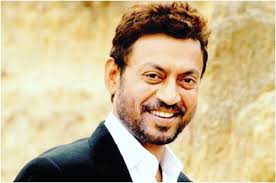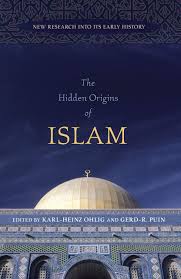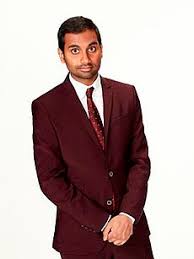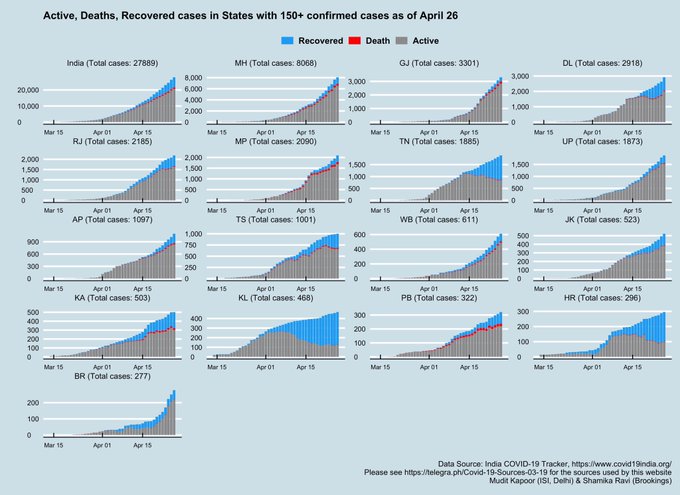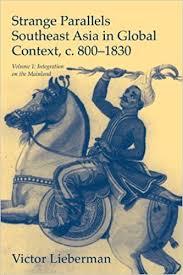The question: why does China produce and export so much more than India does ? At the coarsest granularity, the answer comes down to demographics, distance and war.
Demographics: India and China may have similar populations today, but the size of China’s labor force is still around twice that of India’s. This is because of the different ways in which the two countries transitioned to low fertility. China had a huge surge in population growth after WW2, but its fertility fell dramatically in the 1970s. This has given it a huge pool of workers, nearly a billion, but their number will fall off equally rapidly in the coming years.
In contrast, India will never as many workers as China does today, but will have the largest workforce of any country for a long time. India’s transition to low fertility has been steady and smooth. Basically India’s labour force time series will be flatter with a lower peak, as compared to China’s sharp curve with a higher peak.
Distance: Distance matters. A lot. Within India itself, villages within 5km distance from an urban area became 20% richer between 1993 and 2005, whereas those more than 10 km away became 2% poorer in the same period. Wealth clusters, rich countries tend to clump together in Western Europe and East Asia. The same is true for the rich states of the American North East.
China benefited enormously from being proximate to Japan, Korea and Taiwan (total population 220 million). They were already plugged into the American led rich world, and China entered this network via its contacts with them. For India, the rich countries nearby were the oil rich Gulf states, and we did benefit from them via remittances. But these desperately underpopulated countries cannot be compared to places like Japan that experienced massive industrialization in the early 20th century.
War: Among the top industrial powers in the world, China ranks first, but this is mainly due to low tech goods and high tech reexports. But after China, the countries are the US, Japan and Germany. In fact, they were the leading industrial powers since WW2. (India, by the way is sixth after Korea).
The American economy expanded by a factor of 3 in the decade of the WW2. Even though Germany and Japan were devastated, the hysteresis effects from the large scale industrialization that fighting modern, mechanized wars remained. They had the will and memory to industrialize again.
India has also seen military conflict, but this has remained confined to its margins. We have just never experienced ‘war time’ economy and discipline for long periods of time.
If Indians wanted large scale industrialization, they would demand it. But they dont. They demand everything from reservations to train routes to temples. Perhaps, the payoff from industrialization for workers is not as great as our chattering classes like to think. Foxconn factory workers in Sri City make half the salary of a maid in nearby Chennai. For many families, a second child is a better investment over the long term than the temporary boost in income from the woman working a factory job.
Trying to become the ‘next China’ is not desirable at all, we have to find ways of increasing our service exports, and improving our agro productivity.
 Recently I’ve been reading about the Kalash religion. For readers who are not aware, the Kalash area group of Indo-Aryan speaking pagans who reside in the fastness of Chitral, Pakistan. Genetically about ~30% of their ancestry can be modeled as “Sintashta”, the pastoralist Indo-Europeans who were dominant in Bronze Age Turan, and likely gave rise to the Indo-Aryans. The remaining ~70% of their ancestry is similar to that of the Indus Valley people.
Recently I’ve been reading about the Kalash religion. For readers who are not aware, the Kalash area group of Indo-Aryan speaking pagans who reside in the fastness of Chitral, Pakistan. Genetically about ~30% of their ancestry can be modeled as “Sintashta”, the pastoralist Indo-Europeans who were dominant in Bronze Age Turan, and likely gave rise to the Indo-Aryans. The remaining ~70% of their ancestry is similar to that of the Indus Valley people.